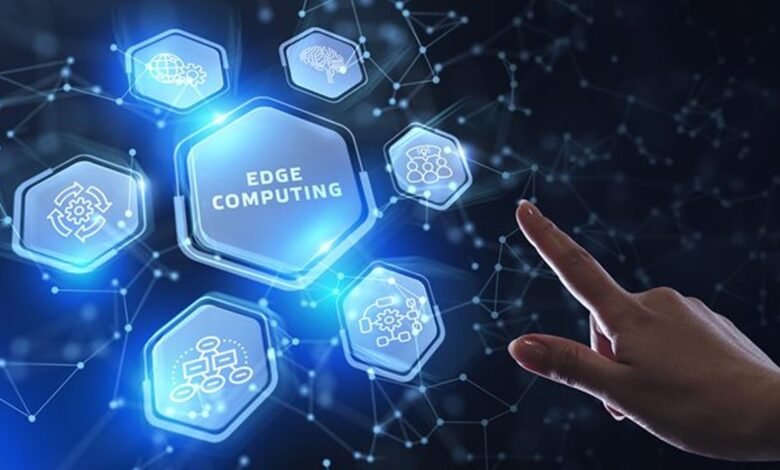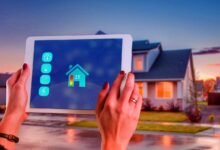IoT and Edge Computing: Tips for Enhanced Performance

Definition of IoT and Edge Computing
At its core, the Internet of Things (IoT) refers to the network of interconnected devices that communicate and exchange data. On the other hand, Edge Computing involves processing data closer to the source, reducing latency and improving efficiency. The marriage of these two technologies opens doors to a new realm of possibilities.
Importance of Performance in IoT and Edge Computing
As businesses increasingly rely on IoT and Edge Computing, performance becomes a critical factor. The seamless functioning of interconnected devices and efficient data processing at the edge are paramount for success in this digital age.
Understanding IoT
Brief Overview
IoT encompasses a vast network of devices, from smart home appliances to industrial sensors. These devices collect and transmit data, creating a web of interconnectedness that enhances automation and decision-making processes.
Key Components
The key components of IoT include sensors, actuators, communication protocols, and cloud-based platforms. These elements work together to enable the seamless flow of data between devices and the cloud.
IoT Devices and Connectivity
Diverse IoT devices, ranging from wearables to industrial sensors, utilize various connectivity options such as Wi-Fi, Bluetooth, and cellular networks. The choice of connectivity impacts the overall performance and efficiency of the IoT ecosystem.
The Role of Edge Computing
Definition and Function
Edge Computing involves processing data near the source of generation, reducing the need for centralized cloud servers. This decentralized approach enhances speed and efficiency in data processing.
Advantages in Processing Data Locally
By processing data locally, Edge Computing minimizes latency and enhances real-time decision-making. This is particularly crucial in applications where instant response is imperative, such as autonomous vehicles and smart manufacturing.
Relationship between IoT and Edge Computing
IoT and Edge Computing share a symbiotic relationship. Edge Computing complements IoT by addressing its inherent challenges, such as latency and bandwidth issues, ultimately leading to improved overall performance.
Challenges in IoT and Edge Computing
Security Concerns
As the number of connected devices increases, so do security concerns. Safeguarding data and ensuring the integrity of IoT devices become paramount to prevent unauthorized access and potential cyber threats.
Data Privacy Issues
The vast amount of data generated by IoT devices raises concerns about privacy. Implementing robust data privacy measures is crucial to gain and maintain the trust of users and stakeholders.
Scalability Challenges
Scaling IoT and Edge Computing systems to accommodate growing demands poses challenges. Designing scalable architectures is essential for ensuring optimal performance as the network expands.
Tips for Enhancing Performance
Optimize IoT Device Communication
Efficient communication between IoT devices is fundamental for enhanced performance. Optimizing protocols and minimizing data transmission delays contribute to a smoother and more responsive IoT ecosystem.
Implement Efficient Edge Computing Solutions
Choosing and implementing efficient Edge Computing solutions tailored to specific use cases is crucial. This may involve deploying edge servers strategically to reduce latency and improve overall system performance.
Security Measures for Enhanced Performance
Prioritizing cybersecurity measures, including encryption and secure authentication, is non-negotiable. A robust security framework ensures the integrity and confidentiality of data, fostering trust in IoT and Edge Computing systems.
Scalability Strategies
Designing scalable architectures from the outset allows for seamless expansion as the IoT network grows. Implementing scalable solutions ensures that performance remains optimal even as the system evolves.
Real-world Applications
Industry Examples
Industries such as healthcare, manufacturing, and agriculture are leveraging the power of IoT and Edge Computing. Real-time monitoring of patient health, predictive maintenance in manufacturing, and precision agriculture are just a few examples of tangible applications.
Success Stories
Several success stories highlight the transformative impact of IoT and Edge Computing. Companies that have embraced these technologies have experienced increased efficiency, reduced costs, and gained a competitive edge in their respective markets.
Future Trends
Evolving Technologies
As technology continues to advance, new innovations in IoT and Edge Computing are on the horizon. Edge AI, 5G integration, and enhanced security protocols are among the trends shaping the future of these interconnected systems.
Anticipated Developments
Anticipated developments include the integration of IoT and Edge Computing in smart cities, further advancements in edge AI capabilities, and the emergence of novel applications in diverse industries.
Read more: Smart Home Security: Essential Tips for a Safe IoT Environment
Conclusion
In the synergy between IoT and Edge Computing holds immense potential for transforming industries and daily life. The tips provided for enhancing performance serve as a guide for businesses and individuals looking to leverage the benefits of these technologies.
Implementing the outlined tips is not just a suggestion but a necessity. The success of IoT and Edge Computing hinges on optimizing performance, ensuring the seamless operation of interconnected devices and efficient data processing at the edge.
FAQs
How does Edge Computing enhance performance in IoT?
Edge Computing minimizes latency by processing data closer to the source, ensuring faster response times and improved real-time decision-making.
What security measures are crucial for IoT and Edge Computing?
Robust cybersecurity measures, including encryption and secure authentication, are essential to safeguard data integrity and prevent unauthorized access.
What are the key components of an IoT ecosystem?
IoT ecosystems comprise sensors, actuators, communication protocols, and cloud-based platforms, working in tandem to facilitate seamless data flow.
How can businesses optimize IoT device communication for better performance?
Businesses can enhance performance by optimizing communication protocols and minimizing data transmission delays among interconnected IoT devices.
What industries benefit most from the integration of IoT and Edge Computing?
Industries like healthcare, manufacturing, and agriculture experience transformative benefits, including real-time monitoring, predictive maintenance, and precision agriculture applications.











